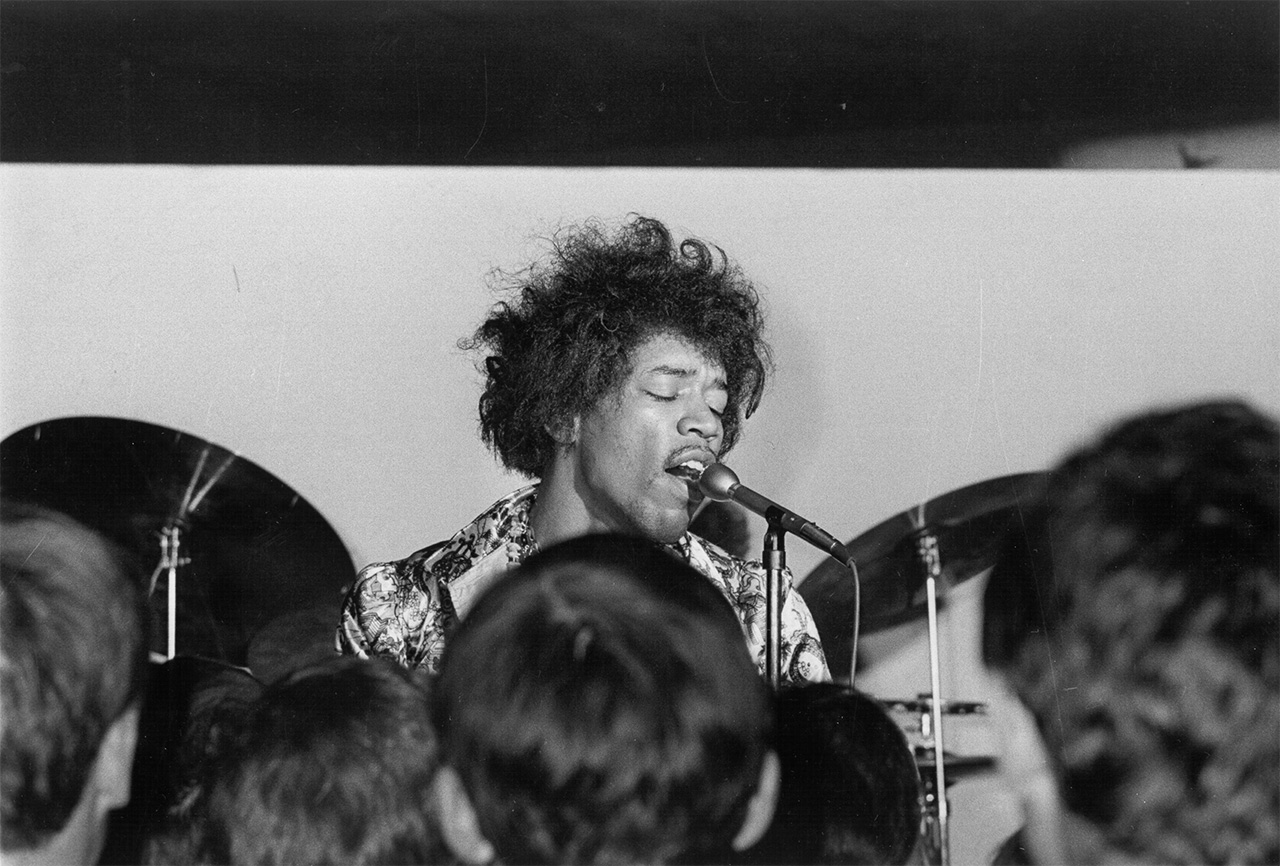Learn Jimi Hendrix’s psychedelic masterpiece courtesy of the Gibson App
In this Gibson App video, Jamie Humphries teaches how to play Jimi Hendrix’s iconic solo from “Purple Haze” and gives you pointers on how to approach it with verve and accuracy.
The Gibson App offers a comprehensive learning curriculum for both acoustic and electric guitar, featuring hundreds of popular songs with step-by-step guidance from some of the world’s top guitarists and instructors. It also includes a tuner, a metronome, a digital amplifier on iOS, and a variety of other tools.
The song “Purple Haze” was released as a single in 1967 from the Are You Experienced album by The Jimi Hendrix Experience. It quickly became one of the defining tracks of the psychedelic rock era. The guitar solo within the song is particularly iconic, showcasing Hendrix’s innovative style and unparalleled creativity using the much-lauded Octavia fuzz pedal—a novel and continually evolving circuit at the time.
In a 2008 conversation with Premier Guitar, inventor Roger Mayer recalls the span of time when the “Purple Haze” solo was realized.
After showing Hendrix a prototype of his Octavia pedal backstage at a performance, the pair discussed how Mayer was gathering feedback from players and improving the circuit. At that point, both Jimmy Page and Jeff Beck had already experienced some of Mayer’s designs, particularly his treble boosters.
Hendrix was impressed with the Octavia, stating, “I’m playing at a club called the Ricky-Tick at Hounslow in about another week. Why don’t you bring it along to the gig and after the gig, we can go back to Olympic Studios. I gotta record a couple of solos for a couple of tunes I’ve got.” The rest was rock history, influencing millions of players and bands.
What is the structure and form of “Purple Haze?”
“Purple Haze” follows a fairly common verse-chorus structure in a moderate tempo—typical for the new rock music of the time. Unlike many of his tunes, Hendrix does not detune a half-step on this one. It’s tuned to E standard.
The song begins with an instantly recognizable tritone guitar riff, which morphs into the slinky main riff, setting up the ominously heavy accompaniment. Then, it slices into a memorable figure using the E7#9 chord, often referred to as the “Hendrix chord” due to its frequent use in his compositions.
The verses and chorus alternate, leading into a bridge section as a buildup to the guitar solo. The solo is realized within the E minor blues scale consisting of the notes E, G, A, Bb, and D. The inclusion of the blue note (Bb) sets it apart from the minor pentatonic scale, giving it a distinctive flavor.
A closer listen to the guitar solo
The guitar solo in “Purple Haze” is a brief yet explosive moment in the song, clocking in at around 20 seconds, and it resolves back into the main riff at the end. Despite its short length, it is among rock’s most celebrated guitar solos. Hendrix’s solo begins with a series of rapid, ascending notes that showcase his signature use of string bending and vibrato. The solo then moves into a more melodic section, with Hendrix seamlessly blending blues and rock elements with the Octavia, tossing the frenetic notes into the air like cosmic shrapnel.
His amp was dialed in to combine well with his use of fuzz and feedback, giving the solo a raw, almost otherworldly sound. Hendrix pushed the boundaries of what was possible with the electric guitar, and this solo is a prime example of his innovative approach. The outro maintains the frenzy, and if you’re a Gibson App subscriber, there’s a lesson for it.
What are the distinguishing features of “Purple Haze”?
Besides the guitar solo, “Purple Haze” is distinguished by several other key elements. The song’s lyrics, often interpreted as a reflection of Hendrix’s experiences with psychedelics, contribute to its trippy, surreal atmosphere. Lines such as “’scuse me while I kiss the sky” have become legendary and are often quoted in discussions about the song’s meaning and impact.
The production of “Purple Haze” also plays a significant role in its innovative sound. The song features heavy use of fuzz, reverb, and echo effects, creating a sonic barrage that was ahead of its time. Additionally, Hendrix’s use of panning—where various sounds are positioned in different locations between the left and right speakers—adds to the song’s immersive quality.
What is the Legacy of “Purple Haze”?
“Purple Haze” is a cultural landmark. The guitar solo, in particular, has inspired countless musicians and remains a benchmark for visceral skill and emotional expression in rock music. Hendrix’s ability to combine technical prowess with raw emotion sets him apart from other guitarists of his era.
The song continues to influence modern music, with its techniques and soundscapes studied and emulated by guitarists and producers alike. Whether you’re a seasoned musician or a casual listener, “Purple Haze” offers a glimpse into Jimi Hendrix’s genius and the music’s transformative power via electric guitar.
Explore the world of the Gibson App today and start your free trial on iOS and Android devices.

